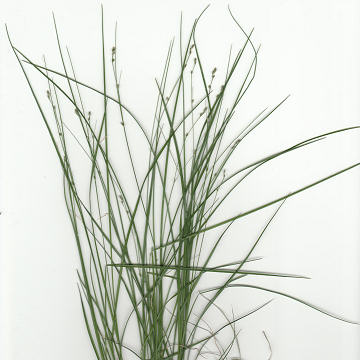

Carex appalachica - (image 1 of 6)
Taxonomy
Family: Cyperaceae
Section Phaestoglochin
Habitat
Open forests and forest margins in well-drained soils.
Associates
Distribution
ME west to southern Quebec, southern Ontario and OH, south to NJ, PA, and in mountains to NC and TN.
Morphology
Plants in dense tufts (cespitose) to 80 cm tall; fertile stems arching at maturity, 0.7-1.3 mm thick at the base; leaves slender, the largest 0.9-1.5 mm wide, sheaths tight and not septate-nodulose on the back; spikes 4-7, androgynous (staminate flowers above pistillate), the lower distinctly separate, the lateral spikes with a few staminate flowers at the tip; perigynia greenish, ascending or suberect, 2.0-3.4 mm, 2-3 times as long as wide, the beak serrulate-margined; scales obtuse, persistent; stigmas 2, coiled or rarely only twisted.
Notes
Fruiting late May to July
Wetland indicator: NA
Carex radiata (Wahlenb.) Small is similar but with mostly straight stigmas. The achene of C. radiata only fills the upper half of the perigynium, while that of C. appalachica is set low in the perigynium.
Carex rosea Schkuhr ex Willd. is also similar but more robust, with the larger leaves 1.8-2.6 mm, erect fertile stems that are 1.5-2.2 mm at the base, and perigynia that radiate in all directions. It has a much wider range than C. appalachica, the latter of which being restricted to eastern North America
References
Gleason, Henry A. and A. Cronquist. 1991. Manual of Vascular Plants of
Northeastern United States and Adjacent Canada. Second Ed.
The New York Botanical Garden. Bronx, NY
|
© Michael Hough 2010 |